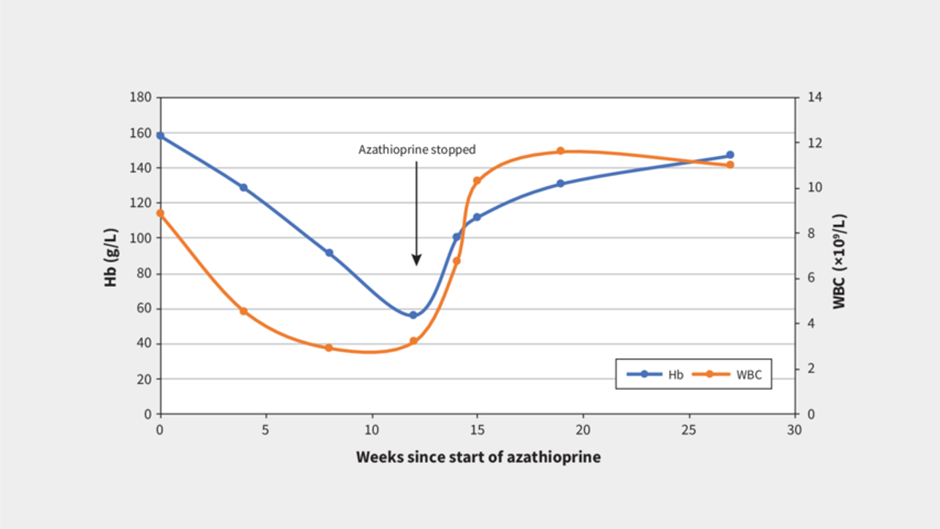A nurse is reviewing a client's laboratory results before administering furosemide 40 mg IV bolus. For which of the following values should the nurse withhold the medication and contact the provider?
Sodium 141 mEq/L
Potassium 2.5 mEq/L
WBC count 8,000/mm3
INR 1.0
The Correct Answer is B
Choice A Reason:
Sodium 141 mEq/L is incorrect. This value is within the normal range (usually around 135-145 mEq/L).
Choice B Reason:
Potassium 2.5 mEq/ is correct. Furosemide, a loop diuretic, can lead to potassium loss through increased urine output. If a client already has a low potassium level (hypokalemia), administering furosemide can further decrease potassium levels, potentially causing or worsening hypokalemia. Hypokalemia can lead to various complications, including cardiac arrhythmias.
Choice C Reason:
WBC count 8,000/mm3 is incorrect. This value falls within the normal range for white blood cell count.
Choice D Reason:
INR 1.0: An INR of 1.0 is within the normal range for a person not on anticoagulation therapy.

Nursing Test Bank
Naxlex Comprehensive Predictor Exams
Related Questions
Correct Answer is B
Explanation
Choice A Reason:
BUN 15 mg/dL (blood urea nitrogen) is incorrect. An elevated BUN level can indicate kidney dysfunction or dehydration, but it's not typically associated with azathioprine's adverse effects. Azathioprine is known to affect bone marrow, leading to decreased blood cell counts, rather than directly impacting kidney function.
Choice B Reason:
WBC 3,000/mm³ (low white blood cell count) is correct. Azathioprine is an immunosuppressive medication used to treat various conditions, including rheumatoid arthritis. One of its known adverse effects is bone marrow suppression, which can lead to decreased production of blood cells, including white blood cells (WBCs). A low WBC count (leukopenia) can increase the risk of infections due to compromised immune function, making it an important adverse effect to monitor in individuals taking azathioprine.
Choice C Reason:
Hct 45% (hematocrit) is incorrect. A hematocrit of 45% is within the normal range for both men and women. Azathioprine adverse effects usually manifest as blood cell-related issues (such as leukopenia) rather than directly impacting hematocrit levels.
Choice D Reason:
Platelets 250,000/mm³: Platelets within the range of 150,000 to 400,000/mm³ are considered normal. Azathioprine typically affects white blood cells more prominently than platelet counts.

Correct Answer is D
Explanation
Choice A Reason:
"I will check the client's INR before administering the heparin." is incorrect. Checking the client's INR (International Normalized Ratio) is essential, but it's more applicable for monitoring anticoagulants like warfarin, not heparin. Heparin's effect is typically monitored via activated partial thromboplastin time (aPTT) or anti-Xa levels, not INR.
Choice B Reason:
"I will aspirate before administering the heparin." Is incorrect. Aspirating before administering heparin injections is not necessary because the medication is given subcutaneously or intravenously and not into a blood vessel.
Choice C Reason:
"I will massage the site after injecting the heparin." Is incorrect. Massaging the site after injecting heparin could increase the risk of bruising or hematoma formation at the injection site. It's generally advised to avoid massaging the area after a heparin injection to prevent tissue trauma.
Choice D Reason:
"I will apply pressure for 1 minute after the injection." Is correct. Applying pressure to the injection site for about a minute after administering heparin helps reduce the risk of bleeding or hematoma formation, especially with subcutaneous injections. This practice aids in minimizing bleeding at the injection site.
Whether you are a student looking to ace your exams or a practicing nurse seeking to enhance your expertise , our nursing education contents will empower you with the confidence and competence to make a difference in the lives of patients and become a respected leader in the healthcare field.
Visit Naxlex, invest in your future and unlock endless possibilities with our unparalleled nursing education contents today
Report Wrong Answer on the Current Question
Do you disagree with the answer? If yes, what is your expected answer? Explain.
Kindly be descriptive with the issue you are facing.
